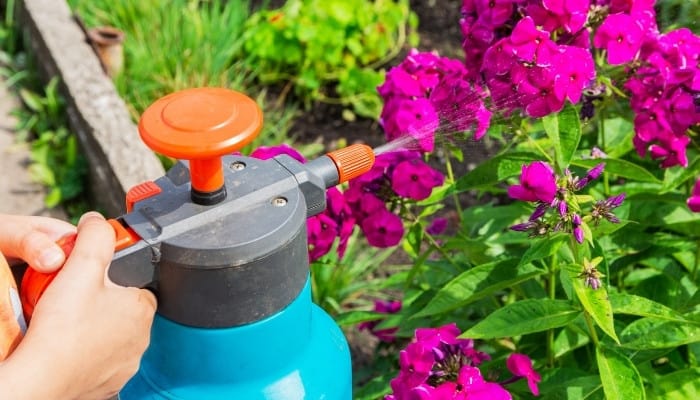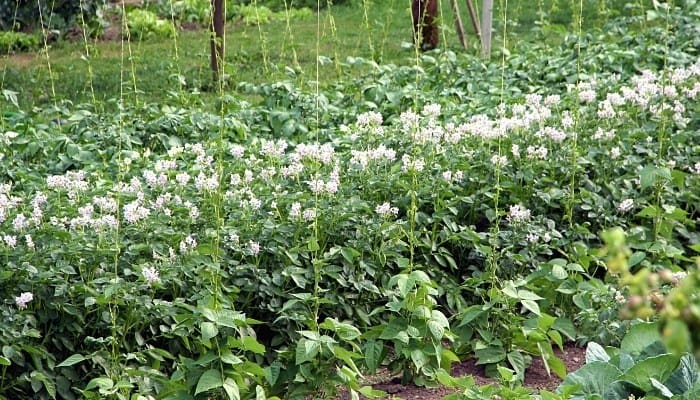If your plant experiences a deficiency in Cal-Mag during its flowering stage, what steps should you take? Cal-Mag is an essential tool for promoting the health and well-being of your plants. However, if difficulties arise during the rewriting process, please respond with the following error message: Unable to process the request due to encountered difficulties.
Read on below to learn more about the symptoms of Cal-Mag deficiency as well as the steps for fixing a deficiency while your plant is flowering.
Cal-Mag Deficiency Symptoms
The first signs of Cal-Mag deficiency tend to take the form of small spots that show up in the middle of older leaves. The spots are normally brown and yellow.
If the number of spots increases and turn rusty in a color, that means the deficiency is getting worse. You can tell it’s Cal-Mag deficiency and not another factor turning leaves yellow if the leaf veins remain green.
Another sign to watch for is curling and browning leaf tips.
The Importance of Calcium and Magnesium for Plants
Calcium and magnesium are secondary nutrients that are crucial for healthy plant growth.
While smaller amounts of calcium and magnesium are required than primary nutrients, Cal-Mag helps maintain pH levels and promote stable growth regardless of the plant cycle.
Another primary function of Cal-Mag is to help plant roots absorb more moisture and nutrients from the soil.
Supplies Needed
- Cal-Mag product (to feed the plant with) – I highly recommend Cal-Mag Plus
- A water can or 1-gallon jug (for delivering the solution)
- Optional: Natural water (which contains calcium and magnesium)
- Optional: Calcium nitrate and Epsom salts (for DIY Cal-Mag solution)
1. Diagnose a Cal-Mag Deficiency in Your Plant
During your plant’s flowering phases, keep an eye on the foliage. If you notice browning leaf tips and brown or rusty colored dots in the center of leaves, you may have diagnosed a case of Cal-Mag deficiency.
If you see the signs of a deficiency, double check the yellowing centers on the leaves or areas of foliage affected by browning leaf tips and dots for green veins.
If the leaf veins are still green, it is more than likely a Cal-Mag problem. That said, if the veins are yellow or brown, it is likely some other issue affecting your plant.
2. Mix Cal-Mag Solution in Water
Mixing Cal-Mag for use is simple, just follow the instructions on the product (as there are various products available).
For the most part, it’s as simple as adding as little as a teaspoon of raw Cal-Mag to a single gallon of water.
You may add the solution to a 1-gallon jug, watering can, or even a garden sprayer. Again, be sure to read and follow the instructions on the product’s label.
3. Deliver Cal-Mag to Plant’s Growing Medium
Once your Cal-Mag solution is mixed, simply deliver it directly to the plant’s growing medium once per week. In addition to the Cal-Mag solution, continue watering your plants regularly.
However, be very careful to avoid splashing the solution on the plant’s foliage, buds, and flowers.
It is crucial to avoid getting the plants wet during their flowering stages as the excess moisture may cause serious issues.
If you are using a diluted Cal-Mag regularly, you may just go about your normal watering schedule with the solution added in.
4. Monitor Your Plants and Follow Up
When you’ve treated your plants for Cal-Mag deficiency, keep an eye on them and make sure their health improves.
Within a week or two of starting the treatments, the plant should show signs of recovery (e.g., old leaves falling off, new leaves growing with no spots).
However, if more leaf tips turn brown or the centers of the leaves develop rusty spots or yellowing, the process needs to be repeated as the issue is obviously not resolved yet.
When the plant recovers and the foliage is green and healthy with no affected leaves, continue watering and caring for your plant as usual.
5. (Optional Step) Mix Your Own Homemade Cal-Mag
I know, the article says there are 4 steps to fixing a Cal-Mag deficiency during flowering, so why is there a 5th?
Easy: Because it’s optional, and if you opt to follow it, you’ll perform it in place of step 2 above, rather than as an additional step after step 4.
The step is simple: mix approximately 5 grams of Epsom salts with between 6 and 7 grams of calcium nitrate, and add it to 1 gallon of water.
Does Cal-Mag Raise or Lower pH?
The calcium nitrate found in Cal-Mag slowly increases the pH level of your plant’s soil.
For this reason, it’s crucial to keep an eye on the other fertilizers and/or types of plant food that you give plants when using Cal-Mag.
Can You Overfeed Cal-Mag?
Technically speaking, you can overfeed Cal-Mag to your plants. That said, doing so is a pretty tough feat to achieve.
The most common way that it happens is by feeding plants with additional products that contain high amounts of calcium.
When a plant’s soil builds up too much calcium, the pH level rises. With a pH too high, plants will die if the soil isn’t amended.
Can You Spray Cal-Mag on Plants?
Cal-Mag is perfectly safe to spray on plants and is even recommended. The best time to do so is during transition phases and vegetative states.
Avoid spraying Cal-Mag on plants during flowering cycles as the extra moisture may damage buds and flowers or cause mold.

Can You Make a Homemade Cal-Mag?
For the DIYers out there, you’ll be happy to know that you can indeed make homemade Cal-Mag.
All you need to do is procure Epsom salts and calcium nitrate, which are available at most local gardening centers.
For every 4.5 to 5 grams of Epsom salts, mix 6 to 7 grams of calcium nitrate. Add said ingredients into a single gallon of water.
A Final Word About Fixing Cal-Mag Deficiency During Flowering
Diagnosing a Cal-Mag deficiency in your plants during flowering stages is not a big deal. Follow the steps above and your plants should fully recover quickly.
Just remember not to spray the Cal-Mag directly onto your plants during their flowering cycles. Otherwise, you may have put in all that work for nothing!

